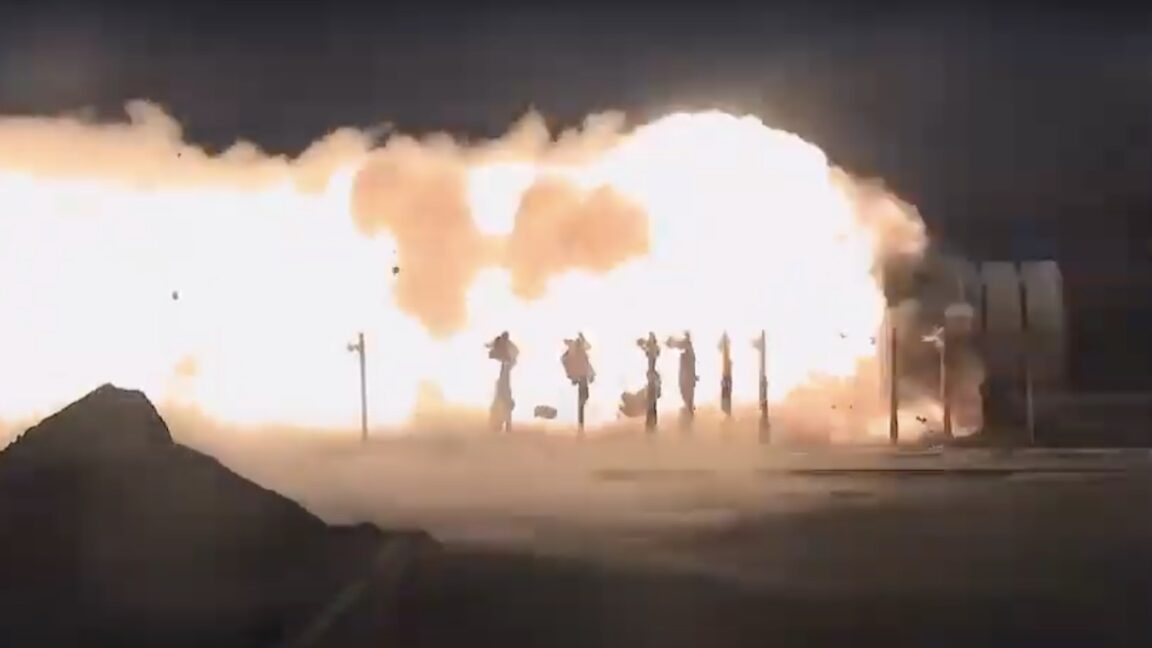NASA tested a new SLS booster that may never fly, and the end of it blew off

Unlike the RS-25 firing at Stennis, NASA chose to broadcast the booster test. Everything appeared to go well until 1 minute and 40 seconds into the burn, when a fiery plume of super-hot exhaust appeared to burn through part of the booster’s structure just above the nozzle. Moments later, the nozzle disintegrated.
Solid rocket boosters can’t be turned off after ignition, and for better or worse, the motor continued firing until it ran out of propellant about 30 seconds later. The rocket sparked a fire in the hills overlooking the test stand.
This was the first test-firing of the Booster Obsolescence and Life Extension (BOLE) program, which aims to develop a higher-performance solid rocket booster for SLS missions. NASA awarded Northrop Grumman a $3.2 billion contract in 2021 to produce boosters with existing shuttle parts for five SLS missions (Artemis IV-VIII), and design, develop, and test a new booster design for Artemis IX.
The boosters produce more than 75 percent of the thrust required to propel the SLS rocket off the launch pad with NASA’s crewed Orion spacecraft on top. Four RS-25 engines power the core stage, collectively generating more than 2 million pounds of thrust.
Northrop Grumman calls the new booster “the largest and most powerful segmented solid rocket motor ever built for human spaceflight.”
One of the most significant changes with the BOLE booster design is that it replaces shuttle-era steel cases with carbon-fiber composite cases. Northrop says the new cases are lighter and stronger. It also replaces the booster’s hydraulic thrust vector control steering system with an electronic system. The propellant packed inside the booster is also different, using a mix that Northrop packs inside its commercial rocket motors instead of the recipe used for the space shuttle.
Northrop Grumman has had a tough time with rocket nozzles in recent years. In 2019, a test motor for the company’s now-canceled Omega rocket lost its nozzle during a test-firing in Utah. Then, last year, a smaller Northrop-made booster flying on United Launch Alliance’s Vulcan rocket lost its nozzle in flight. Vulcan’s guidance system and main engines corrected for the problem, and the rocket still achieved its planned orbit.
Source link







